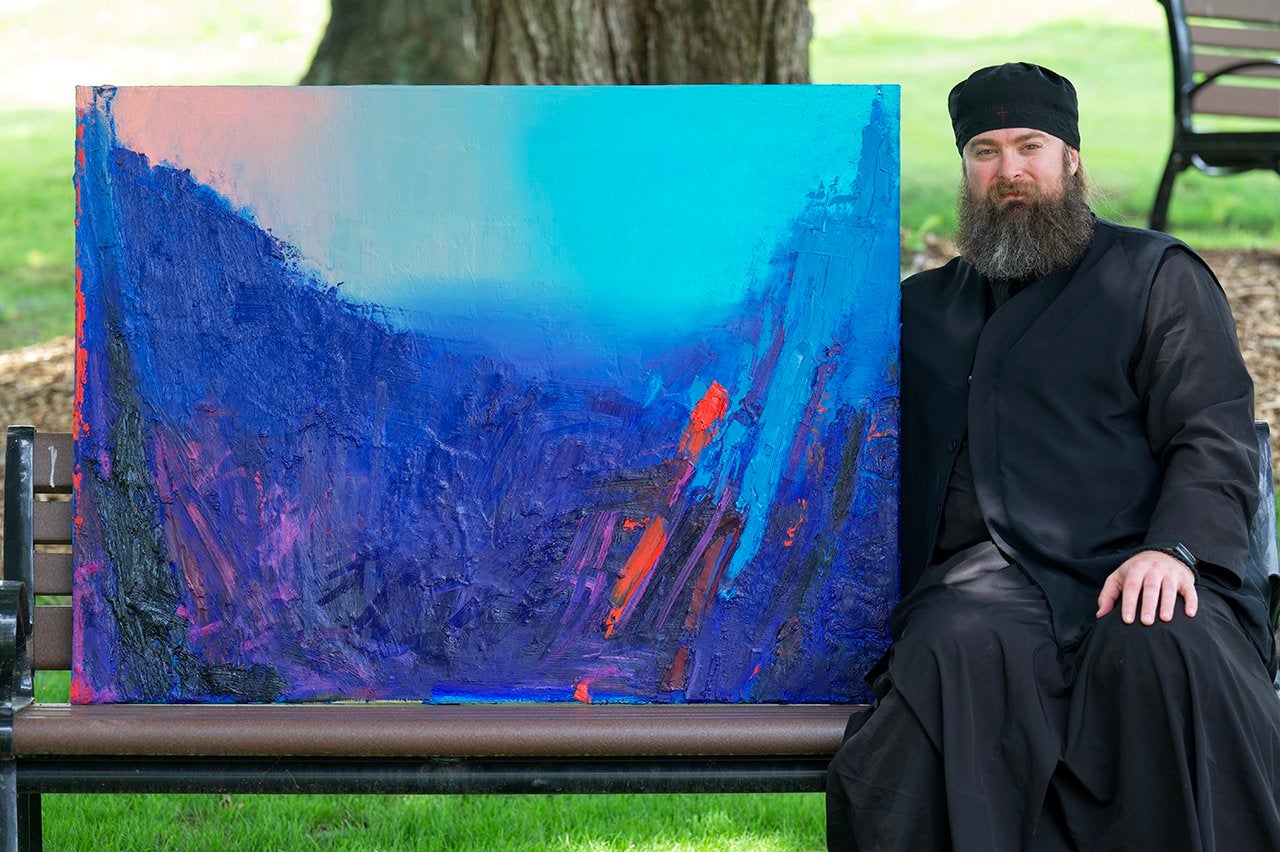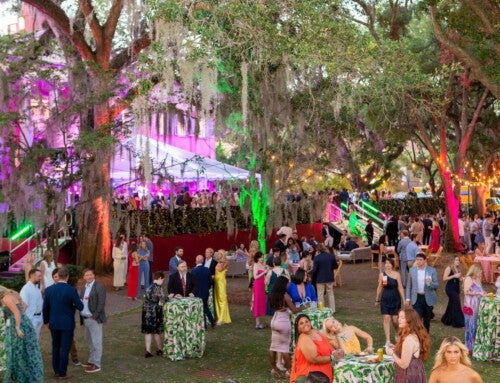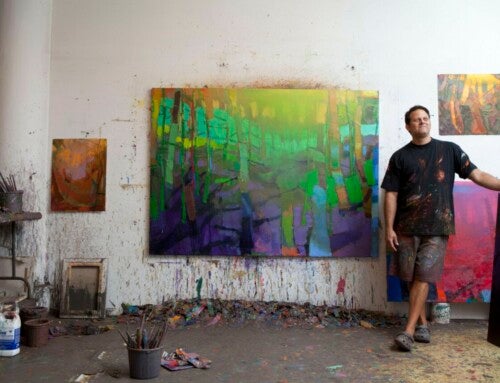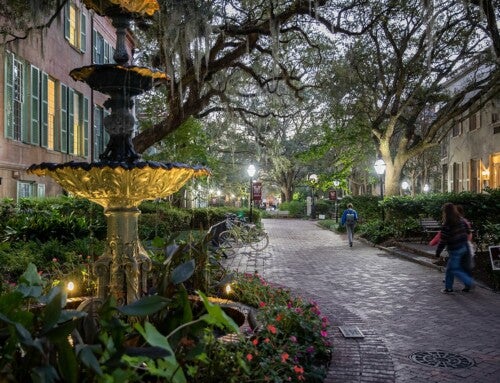As a toddler, George Davis ’03 and ’09 entered an art competition and won. At 9 years old, he won a local coloring competition. As a pre-teen, he learned to paint watercolors and had his first show at 13, where he sold two paintings. In high school, his art teacher encouraged him to continue taking art classes.
When it was time to attend university, Davis set his sights on the College of Charleston, and with the support of family friends, got in on a provisional basis. He joined Pi Kappa Phi fraternity and majored in political science with plans to attend law school. During his semester abroad in Annot, France, his French professor, Jeffery Foster, saw his watercolors and told him he had potential.
Bolstered by Foster, Davis returned to CofC and took Drawing 1 with Jean Michel, a former professor of drawing and sculpture, and Painting 1 with Paul Hitopoulos, a former adjunct instructor of drawing. Both professors asked why he didn’t major in studio art.
Davis graduated with a bachelor’s in political science and returned to Jacksonville, Florida. Less than a month later, he discovered his father dead in his home.
“After my father’s death, I went down a dark road,” says Davis. It took him time to turn his life around, and art played a role every step of the way, including a stint in China painting landscapes. It was Foster who told him to return to the College to get a bearing on life.
Davis returned to the College in spring 2006 to pursue a second bachelor’s degree. He declared as a studio art major and sailed through his classes until independent study.
“I really struggled with independent study – I just wasn’t consistent,” says Davis. “Even though I had my own studio, I was hardly there.”
Fortunately, John Hull, then professor of painting and chair of the Department of Studio Art, came into the picture.
RELATED: Learn more about the College of Charleston’s Department of Studio Art
“George is really talented and very charming,” says Hull. “For this course, he had to develop a project idea and begin to invent himself as an artist. After our second week of conversations and no work, I explained to George that to have useful conversations he needed to present some work. I told him to have 10 landscape paintings ready for our next meeting.”
Davis didn’t have the paintings, so there was no conversation. The following week, he had paintings ready for review.
“Professor Hull lit a fire under me,” says Davis. “He created a love for the process. I was in my studio from sunup to sundown. I am indebted to Professor Hull for pushing me to work.”
Davis completed more than 400 paintings during his time as a studio art major. For his hard work, he received the School of the Arts Outstanding Student Award.
Other members of the campus community admired Davis’s work, including former piano professor Douglas Ashley.
“Professor Ashley bought three of my paintings and set the price five times higher than what I asked,” says Davis. “He told me that if you don’t set the price right, people won’t think your work is worth it. He also said I had to create a website to be considered a professional painter and paid for it to be developed.”

Davis, far right, and Father Sergius Bowyer present a commissioned painting to Supreme Court Justice Samuel Alito (center).
“George was still forming his approach when he was at the College,” says Michael Haga, former associate dean of the School of the Arts. “He still had to find his full vision, but his work showed great promise for his future as an artist.”
When he completed his degree, Davis went on to get his M.F.A. at the School of Visual Arts in New York City. After graduation, he taught classes and landed a job with Bergdorf Goodman, where the designer included his paintings in the window displays.
Meanwhile, ever since he converted to Orthodoxy in 2005, Davis felt a desire to explore monasticism: “When my bishop asked me about attending seminary, I knew I wanted to enroll in St. Tikhon’s Orthodox Theological Seminary in South Canaan, Pennsylvania. It is home to our country’s oldest Orthodox Christian monastery.”
At seminary, Davis met Father Sergius Bowyer, abbot of St. Tikhon’s Monastery and an art lover. He was asked to join the team painting icons, which helped him cover seminary expenses.
After graduating from seminary in 2019, Davis joined St. Tikhon’s Monastery as a novice. He currently holds the rank of ryassaphore monk and endeavors to commit to the labors of monastic life and a life of chastity, poverty, obedience and stability.
“We are in the process of building a studio to train iconographers,” says Davis. “We will host two certificate programs in the major liturgical arts of the church. No such programs exist in the United States.”
On top of being part of the icon training team, Father Sergius encourages Davis to pursue his own creative research. He has his own studio, and his standing obedience, unless told otherwise, is to paint for a minimum of four hours every day.
Davis paints everything from portraits and landscapes to abstract pieces for clients. Most recently, Supreme Court Justice Samuel Alito and his wife, Martha-Ann Alito, commissioned him to paint five pieces, which are scheduled to be completed in the fall of 2023.





